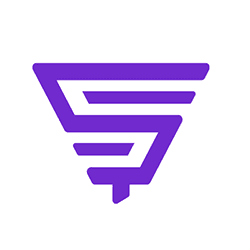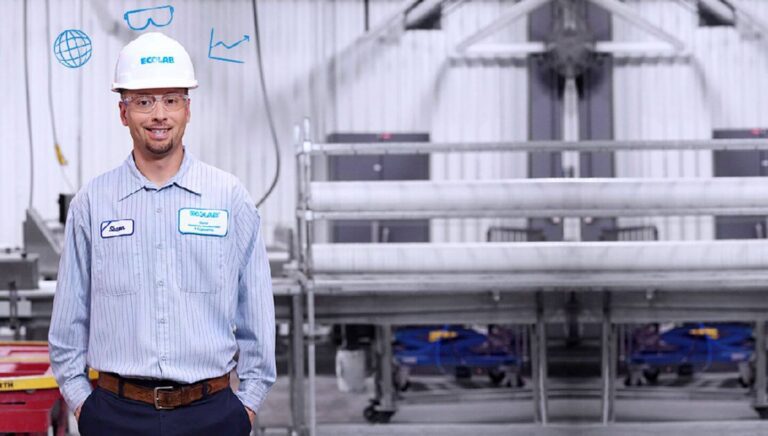As threats of a recession loom and the talent landscape remain in flux, many organizations are taking a closer look at their existing talent acquisition and employee retention strategies with a keen eye toward opportunities for optimization. Those who adopt an agile recruitment approach will garner increased resilience amid economic turbulence, employee turnover, candidate expectation shifts, or other influencing factors.
Agile hiring strategies are based on proven Lean methodologies used for years in the manufacturing and software industries. The approach is simple: the recruitment process is broken down into sprints with clearly defined goals. Each sprint is typically one to two weeks in duration and includes daily check-in meetings (commonly referred to as standups) and a collaborative task board to visually move specific tasks through to completion. This approach aims to increase the recruitment process's speed, improve collaboration, and deliver better results.
The talent acquisition agile framework
The agile framework can be broken down into three main components: process, team, and technology. Looking at this framework from a recruitment standpoint:
- Process: The recruitment process includes several distinct phases, from prepping the job description, marketing the open position, and sourcing candidates to screening, interviews, and final selection. If you consider an open position as a project, the various stages and tasks associated therein can be used to create sprints. For example, an initial sprint may be focused on preparation and include tasks such as identifying responsibilities and qualifications for the role, researching salary ranges, creating the job description, and more.
- Team: The recruitment team may involve several stakeholders, but typically the core team always includes the hiring manager or HR professional who represents the needs of the team/company and a recruitment manager who takes ownership of the process and helps to ensure everyone stays on track. The recruitment manager is essentially the scrum master in agile terms.
- Technology: This may include an applicant tracking system, candidate relationship management platform, video-conferencing solutions, and more.
Beyond the agile framework, teams should cultivate contingent hires, improve employee retention, optimize the candidate journey, implement technology, and leverage market insights.
Strategy 1: Cultivate contingent or contract hires
Contingent workers (also known as “gig” workers) are expected to grow by more than 10% over the next several years, as businesses seek to scale up or down their workforce to meet market needs. In fact, some estimates suggest the number of contingent or contract workers in the U.S. could reach 90.1 million by 2028. According to McKinsey & Company, 36% of the workforce in 2022 self-identified as independent contractors, and researchers from MIT and Deloitte recently found that “In some cases, we see upwards of 30%-50% of an organization composed of contingent workers, and organizations increasingly relying on third parties to deliver some of their most essential services.”
Diversifying your staff with a mix of full-time and contract workers will enable your team to more easily scale up or down as needed. Contract workers may support specific projects on a short-term basis, bringing in the necessary skills to get a job done without the hefty overhead expenses. Or, contract workers may serve a specific function over a longer-term arrangement. In either scenario, the employer and individual have increased flexibility.
The needs of an organization can ebb and flow, so it's critical that employers build long-term relationships with these "temporary" or contract-only individuals.
But what do contingent or contract workers want and need to stay engaged? Above all, they seek flexibility, competitive compensation, and opportunities. Organizations can attract and retain the right talent by making these central to the contingent worker experience.
Teams also should consider emphasizing:
- Diversity, equity and inclusion (DEI) efforts
- Personalization in the candidate experience, courtesy of deep-learning AI
- Company culture
- Opportunities for growth
- Professional stability
Strategy 2: Improve employee retention
Nurturing your existing talent is foundational to a strong hiring strategy. Just as new talent wants to be wooed, your internal team needs to feel valued, cared for, and engaged. Your career site should clearly articulate your brand story, company values, DEI initiatives, and what makes your company and team special. Consider it an opportunity to lean into your work culture in an authentic and aspirational way.
At the core of employee retention lies satisfaction. Employees are more likely to remain with the organization when they are happy, engaged, and challenged. According to the Society for Human Resource Management (SHRM), five key ways to improve employee satisfaction include:
- Respectful treatment of all employees at all levels.
- Compensation/pay.
- Trust between employees and senior management.
- Job security.
- Opportunities to use their skills and abilities at work.
Another opportunity to foster greater employee satisfaction is through promoting team accomplishments and opportunities, both internally and externally. Be sure to highlight your Employee Community Groups, presenting them as a resource for your internal team as they continue down their career paths. Consider featuring day-in-the-life videos and thoughtful testimonials from fellow colleagues, letting them present your company values, goals and objectives in a way that resonates with their colleagues and potential candidates.
When employees are happy, they are more likely to refer their friends and professional network to your company.
Strategy 3: Optimize the candidate journey
The talent acquisition landscape has transformed. Candidates today expect seamless interactions supported by technology. They want better visibility into the process and enhanced communication with potential employer organizations. Employers need to up their game to attract the right talent for their open positions.
Optimizing the all-important job description is a perfect place to start. While often overlooked by busy functional managers who are deep in the weeds of day-to-day responsibilities, talent acquisition leaders must partner with respective hiring managers to develop a clear and accurate job description. Getting this step right is essential to the success and speed of recruitment.
Poor job descriptions too often get in the way of a successful recruitment process, especially if they are unclear about a role's responsibilities and expectations. Successful job descriptions are not only clear and concise, they are aligned with your hiring strategy and overarching company goals.
Good job descriptions are:
- Clear, concise, and free from non-role-related qualifications
- Focused on a specific role versus a catch-all position
- Free of bias, whether intentional or not
Moreover, successful job posts leverage data to target advertisements to the right people. As they say, you can have the best job description and opportunity at your company, but if no one sees it, it won't matter.
Once you've attracted talent to your doorstep, the next step is to employ skills-based assessments to ensure you're hiring the right-fit talent with the required skills and expertise. This is a win-win benefit for both employers and candidates as it confirms a good match between the two. When there's a good match, satisfaction and retention are more likely.
Strategy 4: Implement technology
According to our 2023 research study, while satisfaction with current talent/employee acquisition efforts is generally high (75%), organizations lack skilled candidates, old processes, and ineffective technologies that hinder recruitment. Data also suggests an inability to create meaningful connections with candidates, demonstrating a shift in the talent acquisition landscape and candidate experience.
Other cited challenges included:
- Difficulty communicating with candidates
- Candidates ghosting/losing interest during the process
- Sorting/parsing through a high volume of candidates
Unfortunately, many recruiting technologies still lack the ability to integrate smoothly into an organization's tech stack, which means hiring teams are forced to continue using manual processes and workarounds to get their jobs done. That leaves little time for the relationship-building crucial to successful hiring and retention.
Teams must embrace advanced recruiting technologies, with a special emphasis on integrated technology and automation. Not only can these solutions improve efficiencies within the recruiting team, but they also provide much-needed visibility and connection with prospective candidates.
Common technology solutions such as applicant tracking systems (ATS) and candidate relationship management (CRM) systems may be siloed, causing communication and collaboration challenges across the recruiting team and slowing down the overall process.
The good news is teams can optimize their workflow with standard integrations that:
- Enable recruiters to source search, pipeline, folder and campaign materials from a single source
- Eliminate the need to send candidates away from the ATS to apply
- Allow candidates to view where they are in the application process
- Provide an accurate view of analytics across the apply flow
- Ensure compliance
- Inform business decisions
- Control conversion tracking for ATS vendors
The world of recruitment marketing and talent acquisition is filled with critical nuances and expertise that not all software partners can offer. Functionality, expertise, and strong integrations should always trump disparate technology interfaces. The business cost of maintaining various recruitment technology interfaces compared with the business value always ends up more costly in terms of time and results.
Another challenge many organizations face? Not harnessing the power of artificial intelligence (AI) in their recruitment efforts. Incorporating AI into your tech stack enables your team to:
- Attract talent through employer branding
- Source and engage right-fit candidates
- Manage the entire recruitment process from marketing and assessments to interviews, candidate screening, and job offers
- Onboard talent, making forms, tasks, and socialization into the culture a cinch
Creating an agile hiring strategy starts with a clearly defined framework and ends with smart hiring practices that improve the candidate and recruiter experience. Talent acquisition today may have transformed, but there are some tried-and-true principles that can help organizations build resilience and encourage growth.




